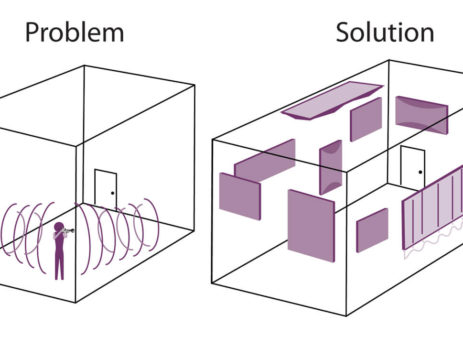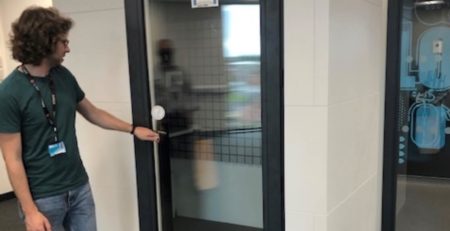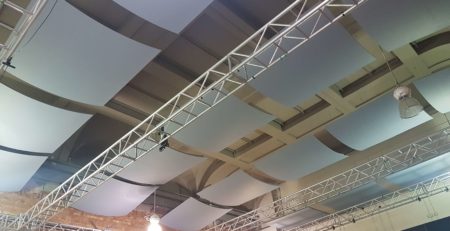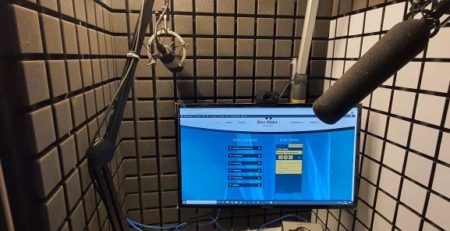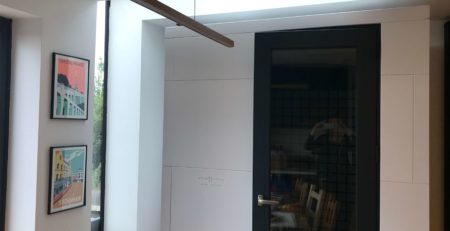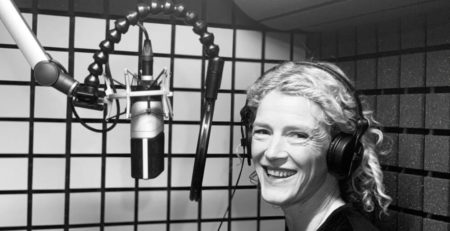Acoustics issues, often referred to as noise problems, can be a real problem, but for many situations the solution may be easier than you think. Here we take a look at four commonly experienced problems in schools and how they might be addressed.
Problem 1 – Reverberant sound levels.
Reverberant sound levels and reflections, commonly described as echoes, are formed by sound bouncing back off hard surfaces. We can measure the time it takes to reflect and decay by 60db and this is known as the “reverberation time”. These reflections occur due to hard surfaces which allow much of the generated sound pressure levels to propagate as reverberant sound. Building Bulletin [BB93] provides guidance for acceptable reverberation times in schools.
To provide a solution we use absorptive, open cell products such as acoustic panels which may be combined with diffusive products. Acoustic panels can be the same colour as the surrounding decor, or they can be covered in fabric or made into a coloured pattern and used as a design feature.
Problem 2 – Structure-borne noise transfer.
Unwanted sound can be generated through floors and ceilings, from outside the building and from plant such as air-conditioning within the structure, which can lead to a noisy environment in which to work. Structure-borne noise transfer can be attributed to a lack of insulation in walls, floors and glazing, holes in the structure, common walls, service ducts and pipework. By measuring the ambient noise of a space typically over a 30minute period a benchmark can be established and compared to recommended levels. Readings in excess of these ideals indicate it’s going to be a difficult space to work in.
Solutions to structure-borne noise transfer are to use additional insulation, increased mass, secondary walls, floating floors and resilient fixings for plant and machinery. Pipework is one of the largest problem areas as these are so wrapped up in the structure of the building in some extreme cases the cheapest solution is actually to change the use of the area. Although you can limit the problem with acoustic covers on the pipes if they are accessible, or install an internal sound isolating room such as our Music Practice Rooms.
Problem 3 – Problems associated with difficulties in hearing speech in a learning environment. Problems associated with difficulties in hearing speech in a learning environment are not due to a lack of volume but when the words themselves are hard to understand. Also, a linked problem is when you hear too much, such as several conversations going on simultaneously. It is due to sound waves bouncing all over the place and are frequently a combination of reverberation times and/or high ambient noise. Because the problem is a combination of the previous two, the solutions are going to be a combination of the previous two as well, such as acoustic panels and acoustic curtains which can be deployed quickly to change the characteristics of a room’s acoustics.
Problem 4 – problems with music or speech on a stage not being heard in the auditorium.
Finally a quick look at problems with music or speech on a stage not being heard in the auditorium. The problem here is not down to increasing volume of the performer, you can’t just “sing louder” or play your musical instrument louder as that would be exhausting for the artists and ruin any kind of light and shade within a piece.
The solution is to use panels designed to reflect the sound back into the auditorium such as a full sized combination of shell “towers” and overhead reflective panels being installed at the venue. Schools or colleges with a smaller space can use ranges designed to be folded up when not required.
Issued on behalf of Black Cat Music
For sales, contracts and professional advice, contact:
Martin Loft
Black Cat Music
Bankside House
Vale Road
Tonbridge
Kent
TN2 3EF
England
Tel: +44 (0)1732 371555.
Fax: +44 (0)1732 371556
E-mail: martin.loft@blackcatmusic.co.uk
www.blackcatacoustics.co.uk
Further information:
Issued on behalf of Black Cat Music
For sales, contracts and product information, contact:
Teresa Rogers
Black Cat Music
Bankside House
Vale Road
Tonbridge
Kent TN9 1SJ
Tel. 01732 371555
Fax. 01732 371556
e-mail: teresa.rogers@blackcatmusic.co.uk
www.blackcatmusic.co.uk
For further information contact:
David Brooks
Technical Marketing Ltd
235A Heath Road
Leighton Buzzard
Beds. LU7 3AG
Tel. 01525 854672
e-mail: dbrooks@technicalmarketingltd.com

